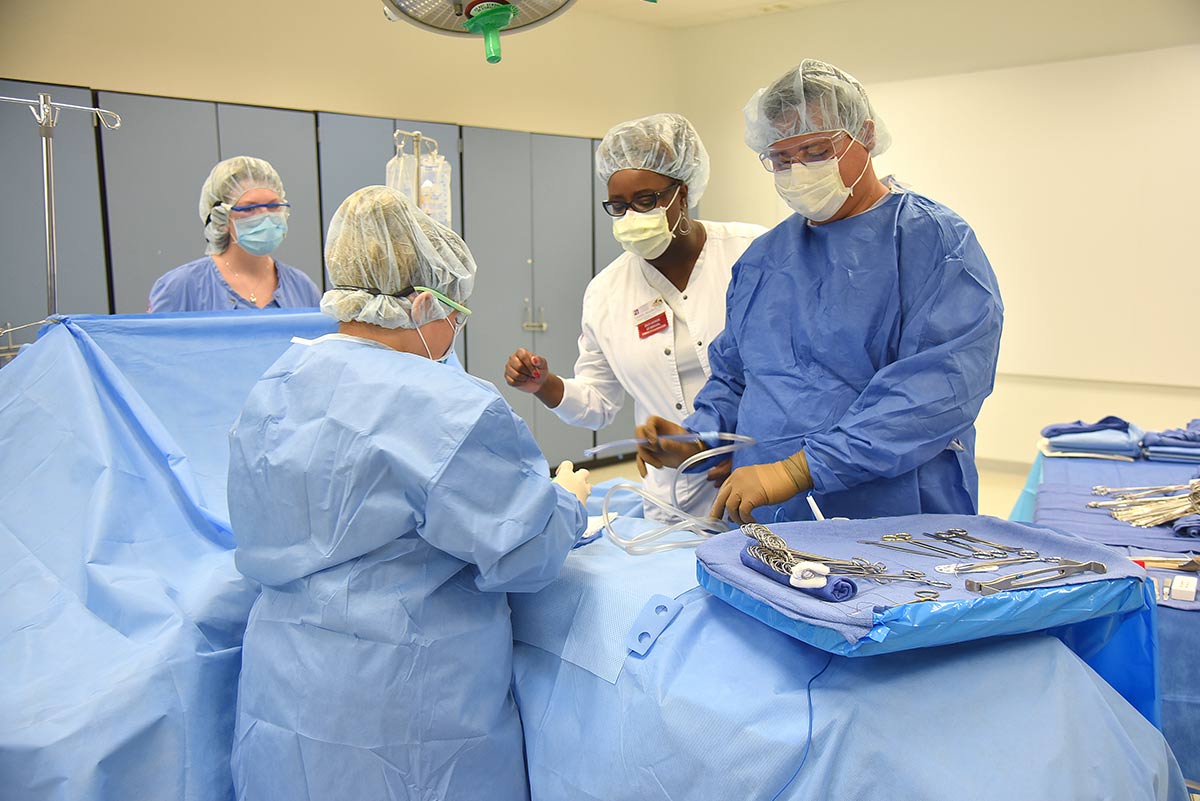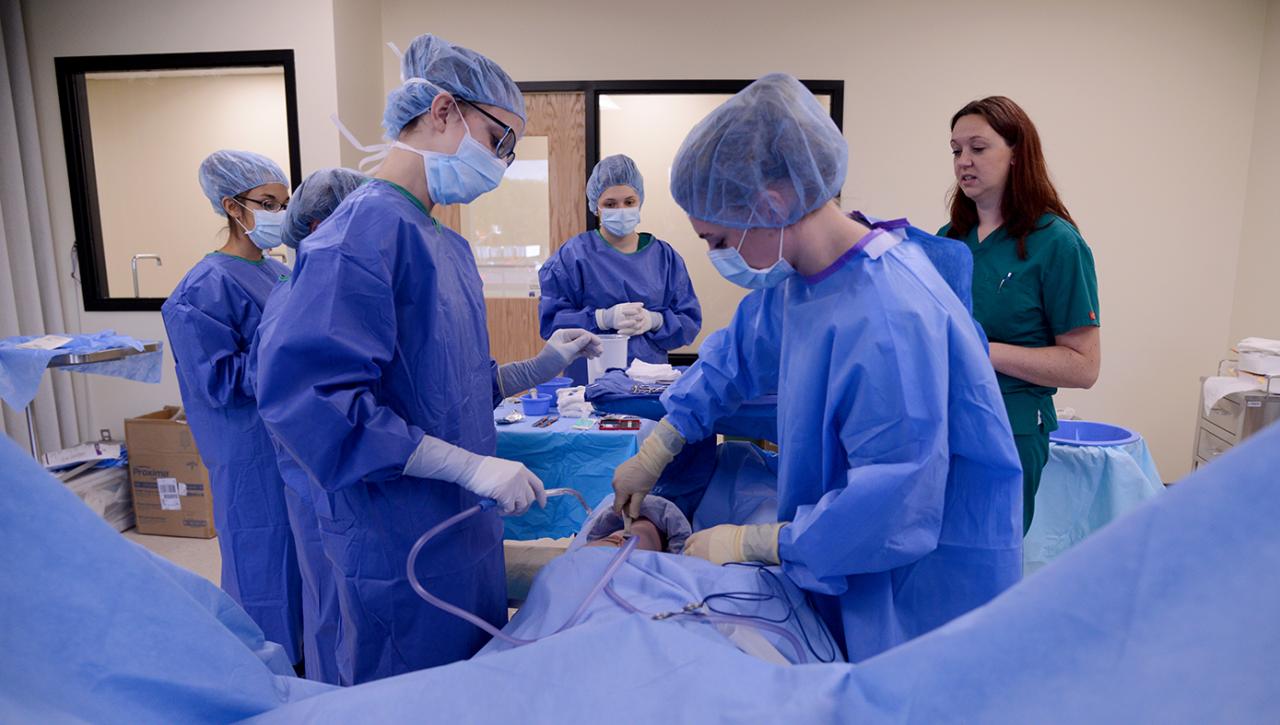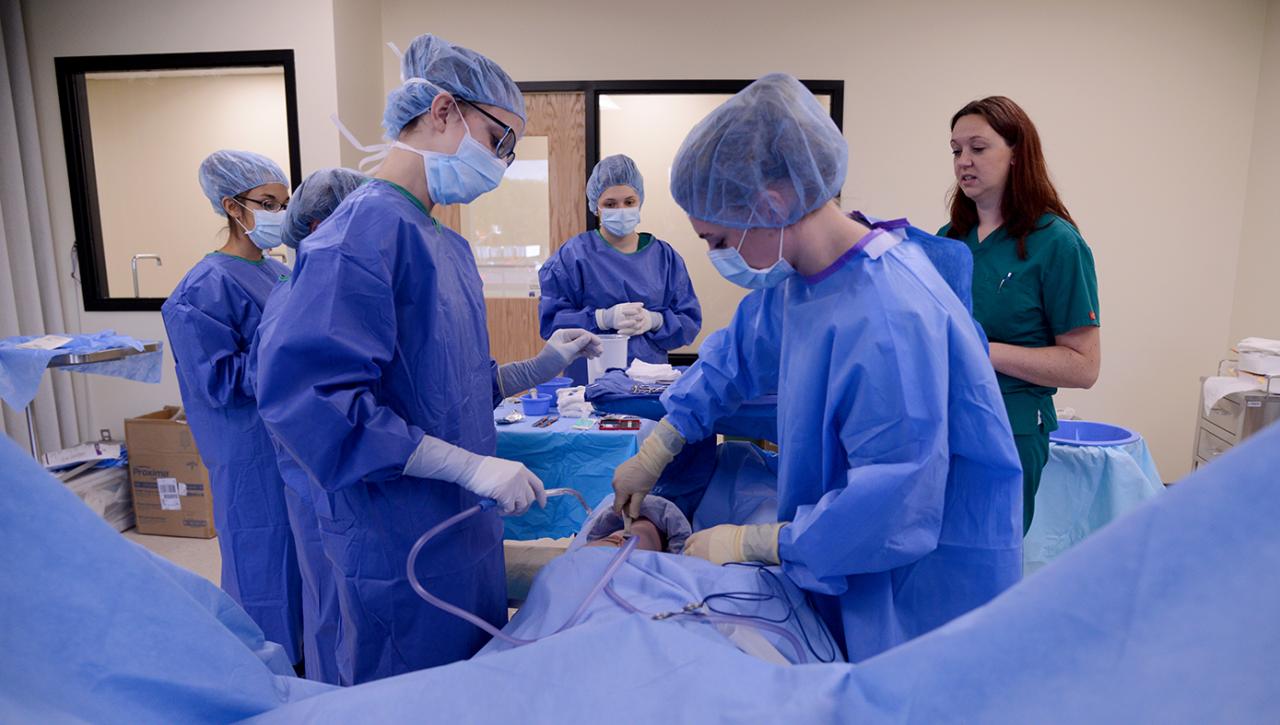Surgical tech programs near me? Finding the right program can be a game-changer for your career. This guide breaks down everything you need to know, from finding accredited programs in your area to understanding the curriculum and career prospects. We’ll help you navigate the search process, compare programs, and make an informed decision about your future in surgical technology.
Whether you’re a recent high school graduate, a career changer, or simply looking to upskill, becoming a surgical technologist requires dedication and the right training. This guide aims to empower you with the knowledge and resources to find the perfect fit.
Understanding Surgical Tech Programs Near Me Search Intent
The search term “surgical tech programs near me” reveals a user’s immediate need for information about local educational opportunities in the surgical technology field. Understanding the motivations behind this search is crucial for providing relevant and helpful information.
Motivations for Searching

Individuals searching for “surgical tech programs near me” are driven by a variety of factors. These include career changes, a desire for further education and skill development, or the need to fulfill specific educational requirements for employment. Some might be responding to a sudden opportunity or a specific job posting requiring certification or a degree in surgical technology.
User Demographics

The demographic range for this search is broad. It encompasses high school graduates seeking career paths, individuals already working in healthcare looking to specialize, and even experienced professionals seeking to enhance their credentials or transition to a new area of surgical technology.
Urgency and Time Sensitivity
The urgency associated with this search can vary significantly. Some individuals may be actively looking for immediate enrollment, perhaps responding to a job opening with a short application deadline. Others may be engaging in longer-term career planning, with less immediate pressure to enroll. The time sensitivity often depends on the individual’s circumstances and career goals.
Locating Relevant Programs
Finding the right surgical technology program requires research and careful consideration of various factors. Several online resources can assist in this process.
Websites and Resources
Numerous websites and resources provide comprehensive listings of surgical technology programs. These include professional organizations like the Association of Surgical Technologists (AST), educational databases, and individual college and university websites. Direct searches on Google Maps, Yelp, and other local search engines can also yield valuable results.
| Program Name | Location | Accreditation Status | Application Deadline |
|---|---|---|---|
| Example Program 1 | Anytown, USA | CAAHEP Accredited | Rolling Admissions |
| Example Program 2 | Springfield, IL | ARC-ST Accredited | August 1st |
| Example Program 3 | San Francisco, CA | CAAHEP Accredited | March 15th |
| Example Program 4 | Austin, TX | Not Accredited | Open Enrollment |
Search Filters
When searching for programs, individuals often utilize filters based on program length (certificate, associate’s, bachelor’s), cost (tuition fees and associated expenses), and accreditation status (ensuring program quality and national recognition).
Finding a Suitable Program: A Flowchart
A user’s search for a suitable program could follow these steps:
1. Identify desired program length (certificate, associate’s, bachelor’s)
2. Set a budget (consider tuition, fees, and living expenses)
3. Search online databases for programs meeting criteria.
4.
Check program accreditation status.
5. Compare program curriculum and course offerings.
6. Review admission requirements and deadlines.
7. Apply to chosen programs.
Program Curriculum and Requirements
Surgical technology programs vary in length and curriculum but share core competencies. Understanding the differences between program types and admission requirements is essential for prospective students.
Curriculum Comparison
Surgical technology programs typically include a blend of classroom instruction and hands-on clinical experience. Common course topics include:
- Surgical anatomy and physiology
- Sterile techniques and infection control
- Surgical instrumentation and equipment
- Surgical procedures and assisting techniques
- Medical terminology and documentation
- Patient care and safety
Admission Requirements
Admission requirements vary depending on the institution and program type. Common requirements include a high school diploma or GED, minimum GPA (often 2.5 or higher), prerequisite courses (such as biology and anatomy), and sometimes entrance exams (like the TEAS).
Program Types
Surgical technology programs are offered at different educational levels. Certificate programs are shorter, focusing on practical skills. Associate’s degrees provide a broader education, including general education courses. Bachelor’s degrees offer the most comprehensive education and may include research opportunities or advanced specializations.
Looking for surgical tech programs near me? Finding the right school is a big step, so make sure you’re focused! Before you start your research, though, check this out: Sea and Himalayan salts recalled in Canada: ‘Do not use, serve or’ – it’s a bit off-topic, but important news if you use those salts.
Once you’ve checked that, get back to finding the perfect surgical tech program!
Career Outlook and Salary Expectations
The career outlook for surgical technologists is generally positive, driven by the growing demand for healthcare professionals. Salary expectations vary by location and experience.
Job Market Outlook
The Bureau of Labor Statistics projects strong growth in healthcare occupations, indicating favorable prospects for surgical technologists. The demand is influenced by factors such as an aging population and advances in surgical techniques.
Salary Ranges
| Location | Average Annual Salary (USD) |
|---|---|
| New York City, NY | $55,000 – $75,000 |
| Los Angeles, CA | $50,000 – $70,000 |
| Chicago, IL | $48,000 – $65,000 |
| Houston, TX | $45,000 – $60,000 |
Note: These are estimated ranges and may vary based on experience, employer, and specific job duties.
Career Paths and Advancement
Surgical technologists can advance their careers through experience, further education, and specialization. Potential career paths include leadership roles in operating rooms, management positions, or specialized roles within specific surgical areas. Further education may lead to supervisory or management positions.
Accreditation and Program Quality
Accreditation is crucial for ensuring the quality and credibility of surgical technology programs. Accredited programs adhere to established standards and provide graduates with recognized credentials.
Importance of Accreditation
Accreditation signifies that a program meets specific educational standards, enhancing the credibility of its graduates and improving their job prospects. It indicates a commitment to quality education and adherence to best practices.
Major Accrediting Bodies, Surgical tech programs near me

The primary accrediting bodies for surgical technology programs in the United States are the Commission on Accreditation of Allied Health Education Programs (CAAHEP) and the Accreditation Review Council on Education in Surgical Technology and Surgical Assisting (ARC-ST).
Accreditation Body Comparison
| Accrediting Body | Standards Focus |
|---|---|
| CAAHEP | Comprehensive program evaluation, including curriculum, faculty, facilities, and student outcomes. |
| ARC-ST | Specific standards for surgical technology education, emphasizing clinical experience and competency-based assessment. |
Financial Aid and Funding Options
Funding surgical technology education is often achievable through a combination of financial aid resources.
Financial Aid Opportunities
Prospective students can explore various financial aid options, including federal grants, loans (such as Stafford Loans), scholarships (offered by professional organizations, colleges, and private foundations), and institutional aid (from the college or university itself).
Applying for Financial Aid
The process typically involves completing the Free Application for Federal Student Aid (FAFSA) and applying for institutional scholarships and grants directly through the chosen educational institution. Students should carefully review eligibility requirements for each aid type.
Funding Resources
- FAFSA (Federal Student Aid)
- Institution’s financial aid office
- Association of Surgical Technologists (AST) scholarship database
- Private scholarship databases (e.g., Fastweb, Scholarships.com)
Illustrative Examples of Program Descriptions
To illustrate the variety of surgical technology programs, here are three hypothetical examples.
Example Program 1: City Central Surgical Tech Institute
Program Length: 12 months (certificate)
So you’re looking into surgical tech programs near me? That’s awesome! Finding the right program is key, and while you’re researching, maybe take a quick break to check out the latest Canucks news – Canucks recall Arturs Silovs, Thatcher Demko remains out vs – before getting back to comparing those program curriculums. Remember to look at accreditation and job placement rates when making your decision on surgical tech programs near me.
Cost: $15,000
Location: City Central, Anystate
Curriculum Highlights: Focuses on hands-on training, strong clinical affiliations with local hospitals, accelerated program structure.
Example Program 2: State University Surgical Technology Program
Program Length: 2 years (Associate’s Degree)
Cost: $25,000 per year (in-state tuition)
Looking for surgical tech programs near me? Finding the right school is a big decision, just like the Canucks’ recent roster moves. Check out this article on the team placing star forward Elias Pettersson on injured reserve: Canucks place star F Pettersson on retroactive IR, recall G Silovs , then get back to researching those surgical tech programs – your future career awaits!
Location: Anytown, Anystate
Curriculum Highlights: Comprehensive curriculum, strong emphasis on anatomy and physiology, extensive clinical rotations, and access to advanced simulation labs.
Example Program 3: National University of Health Sciences Surgical Technology Bachelor’s Program
Program Length: 4 years (Bachelor’s Degree)
Cost: $30,000 per year (in-state tuition)
Location: Major City, Anystate
Curriculum Highlights: In-depth study of surgical technology, research opportunities, advanced clinical experience, and potential for specialization in specific surgical areas.
Surgical Technology Lab Description
A typical surgical technology lab would include a variety of equipment and setups designed to simulate a real operating room environment. This would include practice tables with adjustable height and tilt, a range of surgical instruments and equipment, sterilization equipment (autoclaves), and mannequins or models for practicing procedures. The lab would also include computer workstations for learning medical terminology, anatomy, and surgical procedures.
Strict adherence to sterile techniques would be emphasized throughout the lab’s operation.
A Day in the Life of a Surgical Technology Student
A typical day for a surgical technology student might begin with a morning lecture on surgical anatomy or a specific surgical procedure. This would be followed by a lab session where students practice instrument handling, sterile techniques, and setting up for various surgical procedures. Afternoon hours could be spent in a clinical setting, observing and assisting surgical technologists in a real operating room, under the supervision of experienced professionals.
Evenings might be dedicated to studying, completing assignments, and preparing for upcoming classes or clinical experiences.
Ultimate Conclusion
Landing your dream surgical technology program is within reach! Remember to carefully consider program accreditation, curriculum, career goals, and financial aid options. By utilizing the resources and information provided here, you can confidently navigate the process and embark on a rewarding career as a surgical technologist. Good luck!
Question Bank
What’s the average program length for surgical technology?
Program lengths vary. Certificate programs might be a year or less, while associate’s degrees typically take two years.
Are there online surgical tech programs?
While some programs offer online components, most require significant hands-on lab work, making fully online options rare.
What’s the difference between a surgical tech and a surgical nurse?
Surgical techs assist surgeons during procedures, while surgical nurses provide patient care and monitoring, often having more advanced medical training.
How much does a surgical tech make?
Salaries vary by location and experience but generally range from $45,000 to $70,000 annually.
Do I need a high school diploma to apply?
Generally, yes, a high school diploma or GED is a minimum requirement for most programs.
